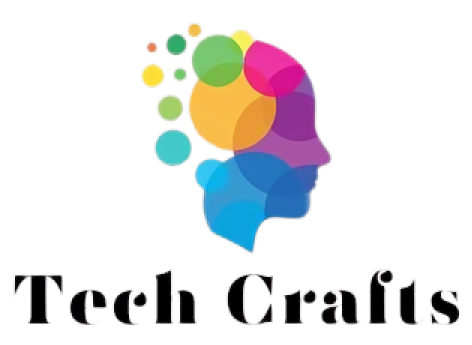In today’s competitive business environment, understanding and managing your workforce is more important than ever. That’s where employee assessment comes in. Whether you’re managing a team of five or five hundred, properly evaluating your employees can help you boost productivity, identify training needs, and retain top talent.
This guide will walk you through everything you need to know about employee assessment, including its purpose, methods, benefits, and best practices.
What Is Employee Assessment?
Employee assessment is the structured process of evaluating an employee’s performance, skills, behavior, and contributions within a workplace. It’s often used to:
- Measure productivity and efficiency
- Provide feedback for growth
- Make informed decisions about promotions or terminations
- Identify training and development needs
- Align individual goals with company objectives
Employee assessments can be conducted periodically (e.g., annually or quarterly) or as needed during specific project reviews or performance concerns.
Why Employee Assessments Matter
| Benefit | How It Helps the Business |
| Improves Performance | Feedback helps employees correct issues and improve skills |
| Increases Engagement | Employees who receive feedback feel more valued |
| Identifies Skill Gaps | Highlights areas where training is needed |
| Supports Promotion Decisions | Ensures fairness and transparency in advancement |
| Aligns Goals | Keeps team efforts in sync with organizational objectives |
An effective employee assessment system ensures that employees are held accountable, rewarded fairly, and motivated to grow.
Common Types of Employee Assessments
Performance Appraisals
- Regular evaluations (e.g., annual or biannual)
- Focus on job responsibilities, productivity, and goal achievement
Self-Assessments
- Employees evaluate their own performance
- Encourages self-awareness and accountability
360-Degree Feedback
- Gathers feedback from peers, subordinates, supervisors, and sometimes clients
- Offers a well-rounded view of employee behavior and teamwork
Skills Assessments
- Tests specific competencies or job-related skills
- Often used for technical or role-specific positions
Behavioral Assessments
- Evaluates personality traits, communication style, and cultural fit
- Useful for hiring, team placement, and leadership development
Project-Based Reviews
- Performance measured based on deliverables and outcomes of specific tasks or projects
Tools & Software for Employee Assessment
Modern HR software simplifies the assessment process. Top platforms include:
| Tool | Key Features |
| BambooHR | Performance tracking, goal setting, feedback loops |
| Lattice | Continuous feedback, performance reviews, analytics |
| Trakstar | Custom evaluations, 360-degree feedback, goal tracking |
| Zoho People | Appraisals, workflows, reports |
| PerformYard | Flexible review cycles, real-time performance data |
These tools automate review schedules, gather feedback, and help HR teams make data-driven decisions.
How to Conduct an Effective Employee Assessment
Set Clear Objectives
What are you measuring? Choose between productivity, teamwork, leadership, innovation, etc.
Use Defined Criteria
Create standardized benchmarks for each role to maintain consistency.
Communicate the Process
Ensure employees know what’s being assessed, when, and how feedback will be used.
Collect Feedback from Multiple Sources
Especially for roles that interact cross-functionally.
Schedule One-on-One Discussions
Allow employees to respond, reflect, and share their perspective.
Document and Track Progress
Maintain assessment records for reference during future reviews or HR decisions.
Key Metrics to Include in Employee Assessments
| Metric | Why It Matters |
| Job Knowledge | Ensures role competency |
| Productivity | Measures output quality and quantity |
| Teamwork | Evaluates collaboration and peer relationships |
| Communication Skills | Important for both internal and client-facing roles |
| Problem-Solving | Reflects ability to think critically |
| Punctuality & Attendance | Basic but vital for dependability |
| Initiative | Shows motivation and leadership potential |
Employee Assessment and Career Development
Regular assessments are crucial for:
- Identifying high-potential employees
- Mapping out promotion paths
- Developing personalized training plans
- Keeping employees engaged and motivated
An employee who sees growth opportunities is more likely to stay loyal and committed to the organization.
Mistakes to Avoid in Employee Assessment
- Being overly subjective or biased
- Failing to document performance consistently
- Using one-size-fits-all evaluation forms
- Avoiding tough conversations
- Focusing only on weaknesses without highlighting strengths
A poor assessment process can demotivate employees and lead to turnover. Strive for balance, fairness, and transparency.
Frequency of Employee Assessments
The best cadence depends on your business size and structure. Consider:
| Assessment Type | Recommended Frequency |
| Formal Performance Review | Annually or Biannually |
| Check-ins or 1-on-1s | Monthly or Quarterly |
| 360-Degree Feedback | Annually (or every 6 months for leadership) |
| Self-Evaluations | Before performance reviews or promotions |
Frequent check-ins help reinforce expectations and reduce surprises at formal review times.
Conclusion
Employee assessment is not just about identifying problems—it’s about unlocking potential. When done correctly, it helps managers make smarter decisions, employees grow professionally, and organizations thrive.
By using the right tools, setting clear expectations, and fostering open dialogue, businesses can turn performance reviews into powerful development opportunities.
FAQs
1. What is the purpose of employee assessment?
Employee assessment helps evaluate performance, identify skill gaps, and support growth, leading to improved team productivity and goal alignment.
2. What is the difference between employee assessment and performance appraisal?
Assessment is a broad term covering multiple types of evaluation (skills, behavior, etc.), while a performance appraisal typically refers to a periodic formal review focused on job performance.
3. How do you measure employee performance?
Use key performance indicators (KPIs), peer feedback, project outcomes, and alignment with job descriptions and company values.
4. Can employee assessments be biased?
Yes. To reduce bias, use standardized criteria, multiple feedback sources, and automated tools that help track objective data.
5. How often should employee assessments be conducted?
Most companies conduct them annually, but more frequent quarterly check-ins are ideal for continuous improvement and communication.
Also read: Rivers Edge Lockdown: 9 Questions Still Left Unanswered







